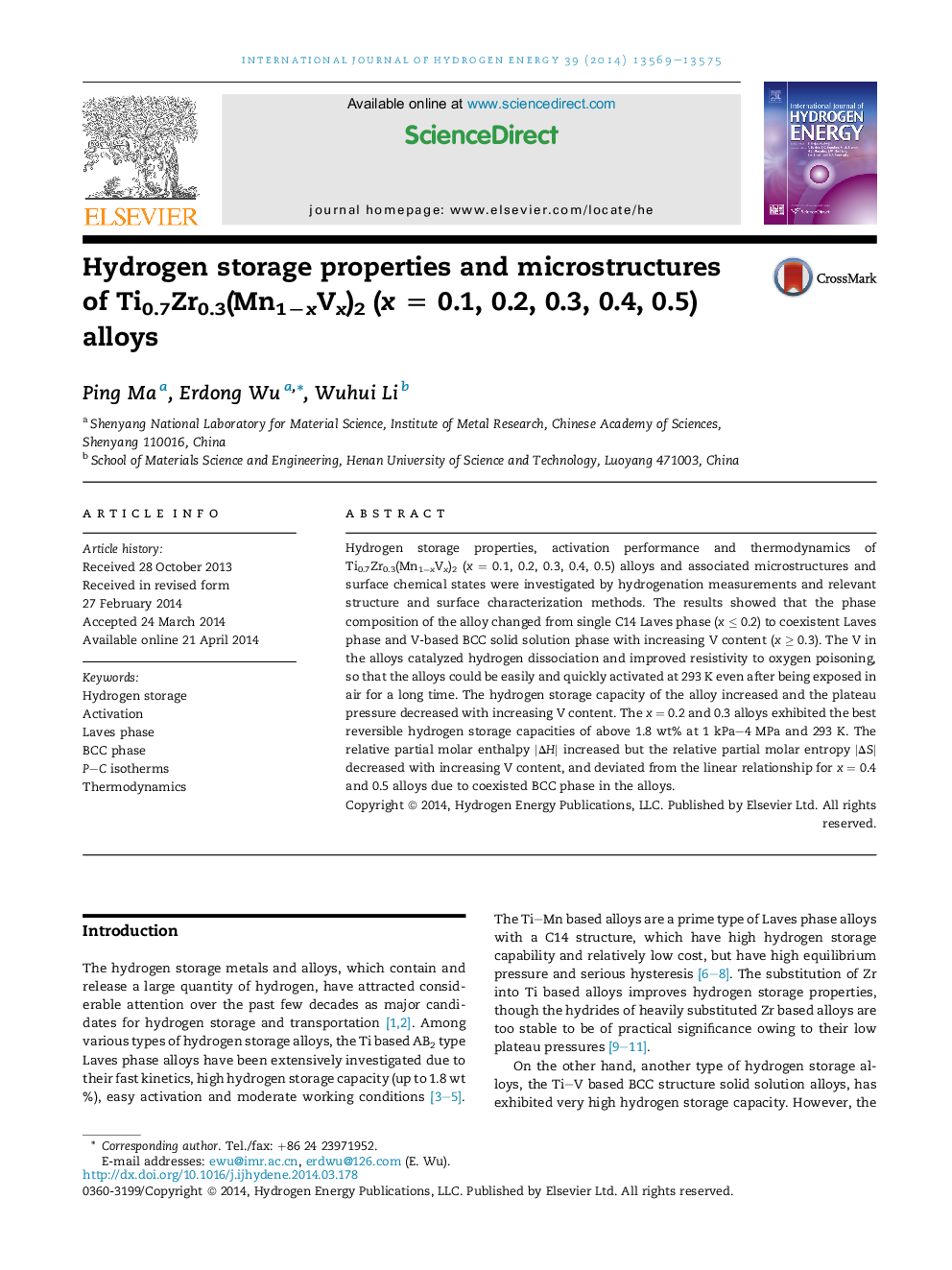| Article ID | Journal | Published Year | Pages | File Type |
|---|---|---|---|---|
| 1272656 | International Journal of Hydrogen Energy | 2014 | 7 Pages |
•Ti0.7Zr0.3(Mn1−xVx)2 alloys contain C14 Laves phase and coexisted BCC solution.•V in alloy catalyzes H2 dissociation and improves resistivity to oxygen poisoning.•Alloys can be easily activated even after being exposed in air for a long time.•Some of the alloys exhibit reversible hydrogen storage capacities of above 1.8 wt%.•|ΔH||ΔH| for hydriding increases but |ΔS||ΔS| decreases with increasing V content in alloy.
Hydrogen storage properties, activation performance and thermodynamics of Ti0.7Zr0.3(Mn1−xVx)2 (x = 0.1, 0.2, 0.3, 0.4, 0.5) alloys and associated microstructures and surface chemical states were investigated by hydrogenation measurements and relevant structure and surface characterization methods. The results showed that the phase composition of the alloy changed from single C14 Laves phase (x ≤ 0.2) to coexistent Laves phase and V-based BCC solid solution phase with increasing V content (x ≥ 0.3). The V in the alloys catalyzed hydrogen dissociation and improved resistivity to oxygen poisoning, so that the alloys could be easily and quickly activated at 293 K even after being exposed in air for a long time. The hydrogen storage capacity of the alloy increased and the plateau pressure decreased with increasing V content. The x = 0.2 and 0.3 alloys exhibited the best reversible hydrogen storage capacities of above 1.8 wt% at 1 kPa–4 MPa and 293 K. The relative partial molar enthalpy |ΔH||ΔH| increased but the relative partial molar entropy |ΔS||ΔS| decreased with increasing V content, and deviated from the linear relationship for x = 0.4 and 0.5 alloys due to coexisted BCC phase in the alloys.
